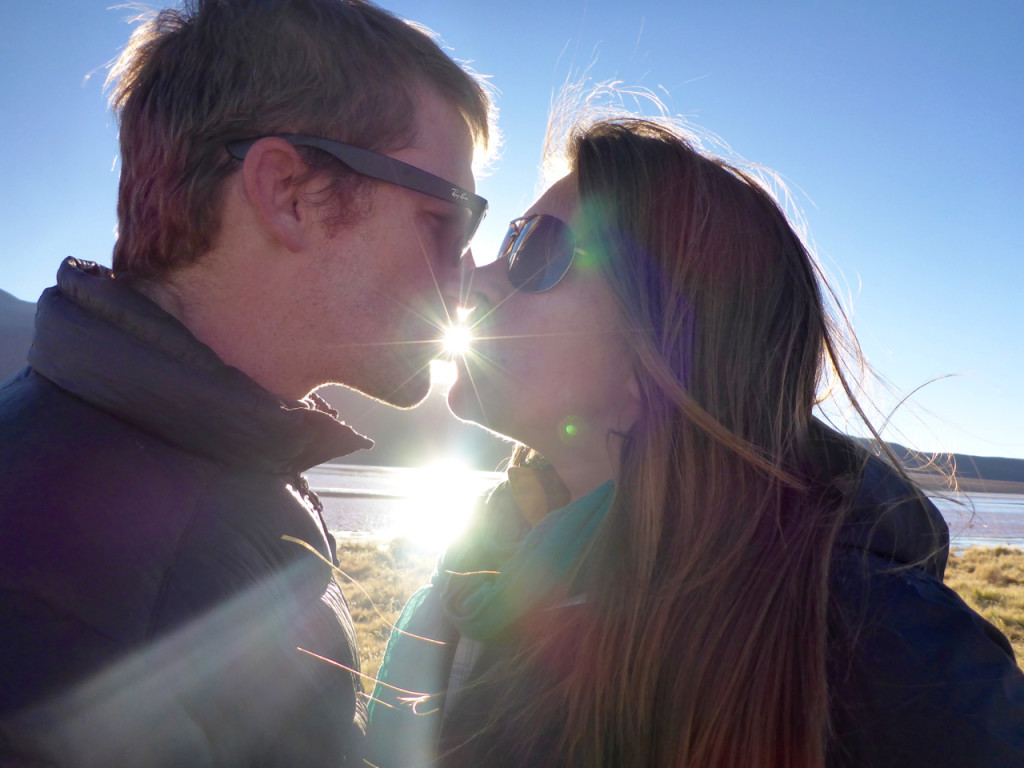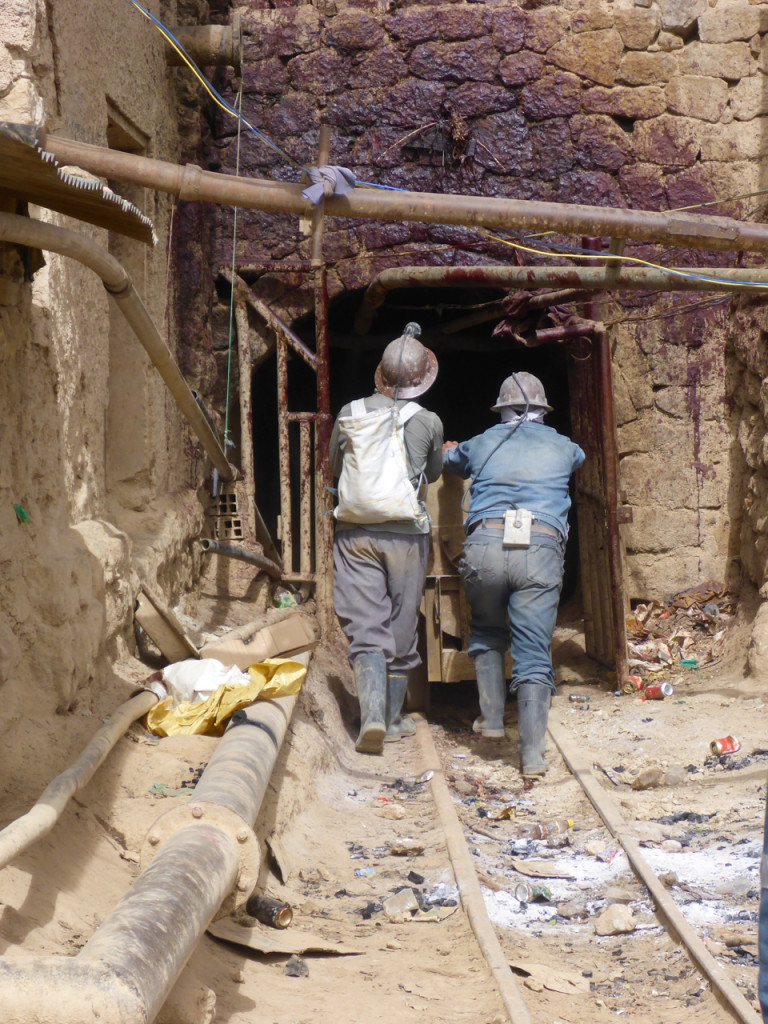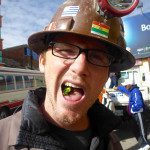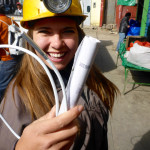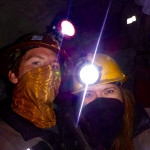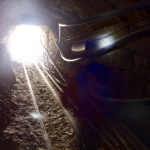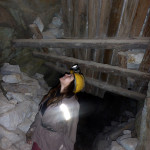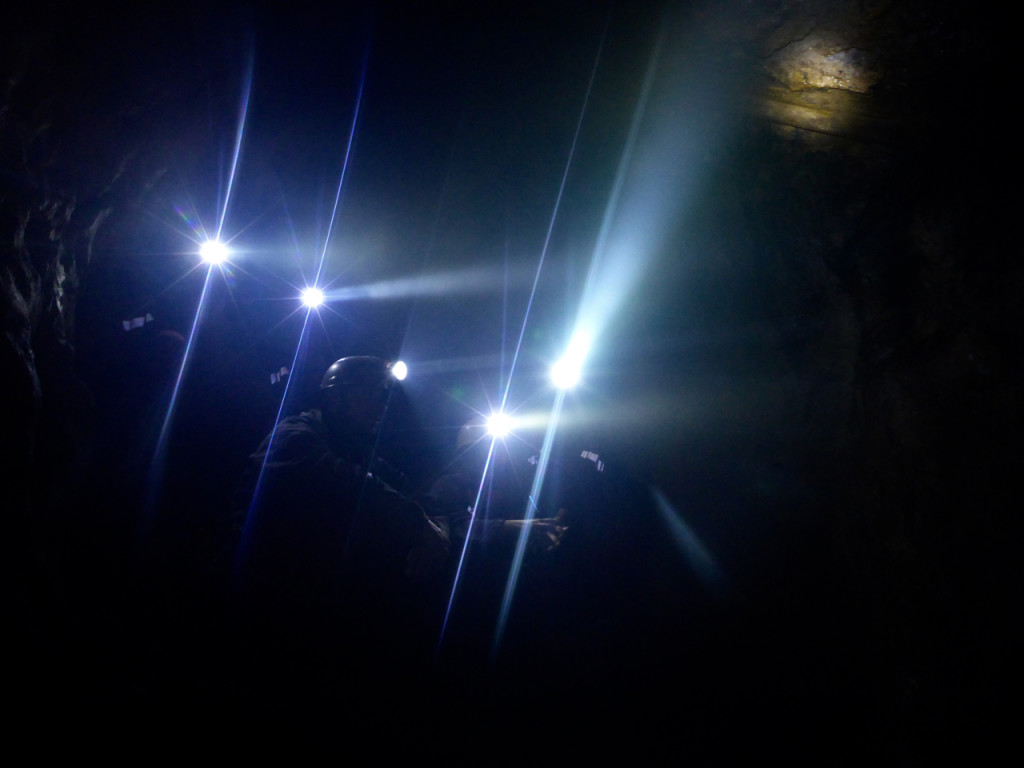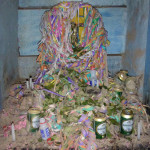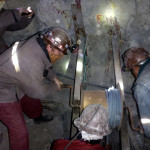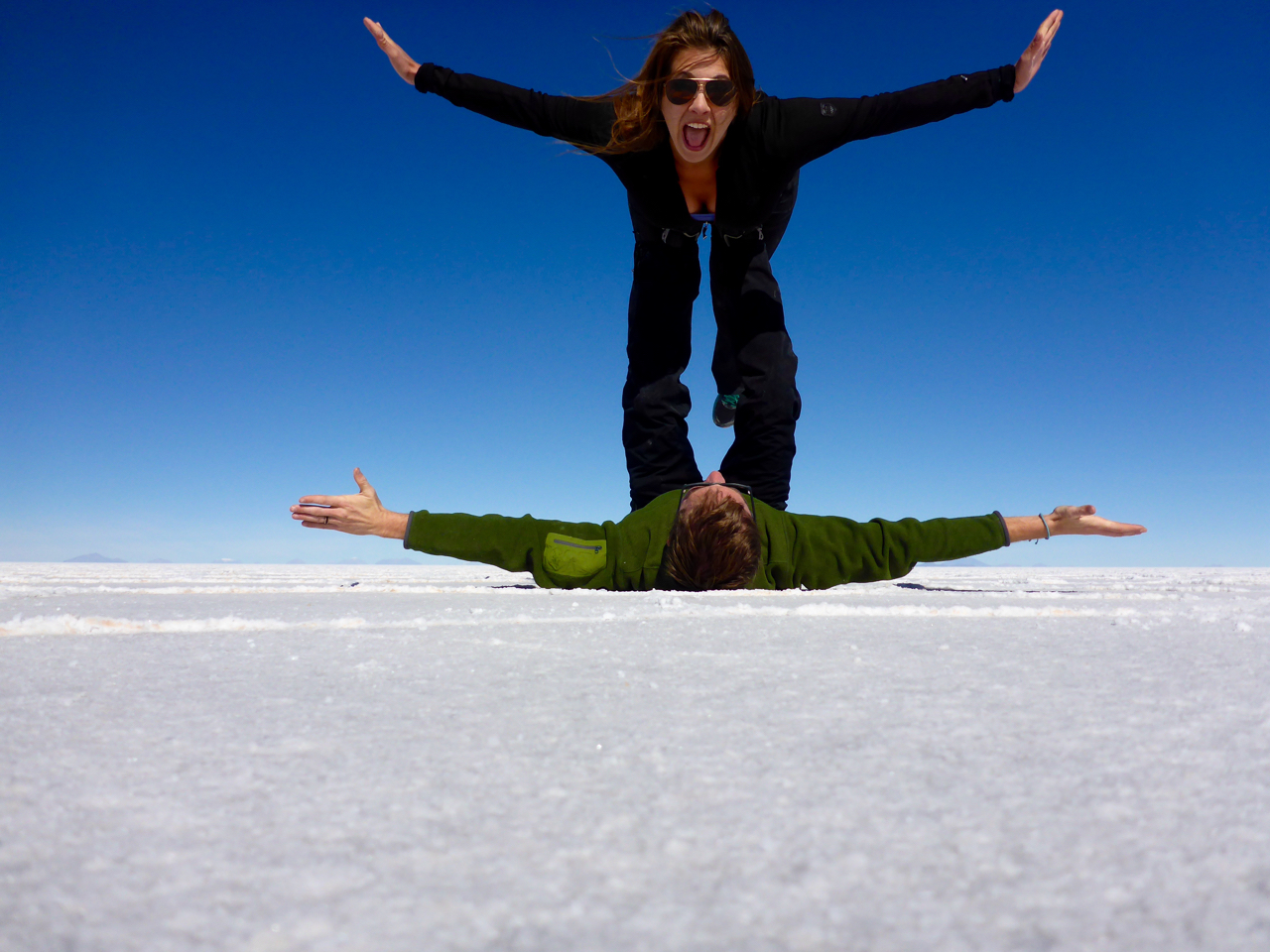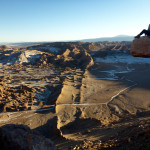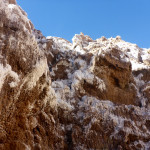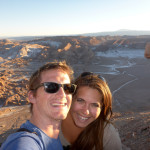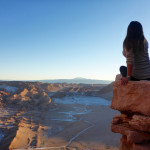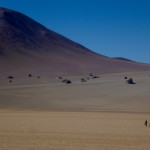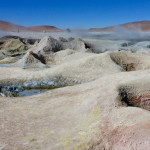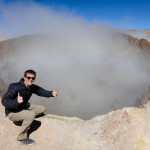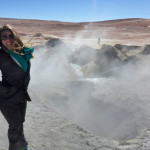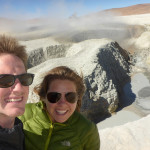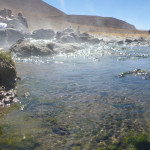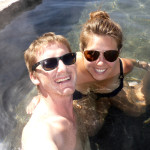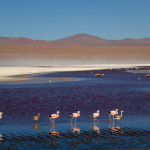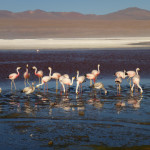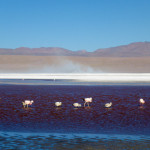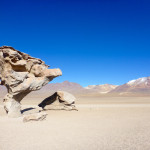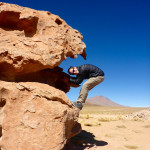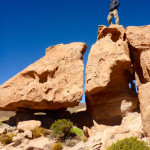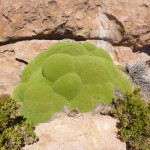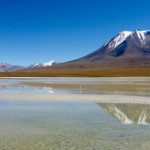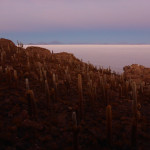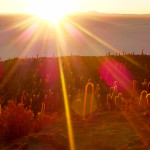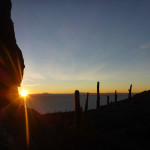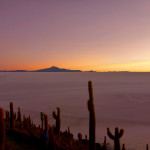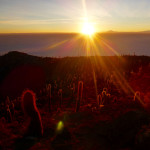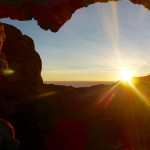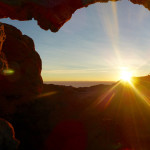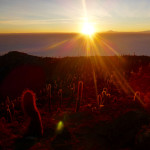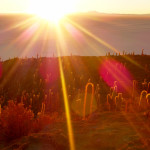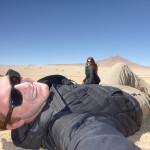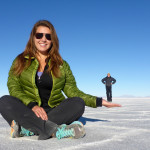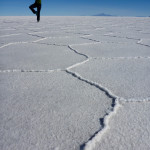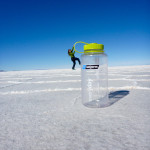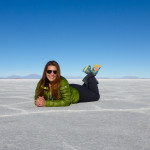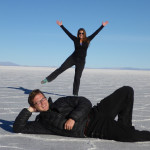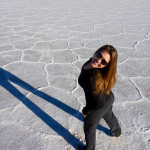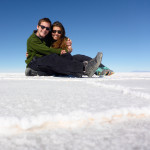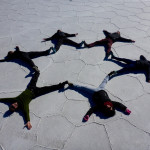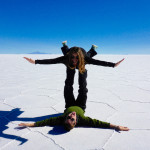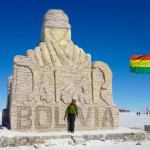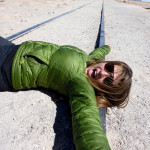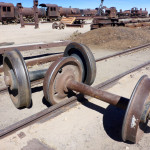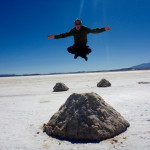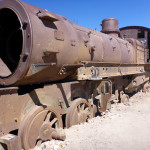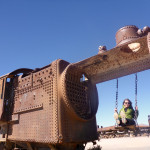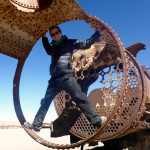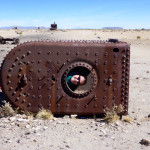After a 24 Hour bus ride from Santiago we arrived in San Pedro de Atacama, Chile, the “Driest Place on Earth.” It definitely lives up to the title. It’s a pretty surreal landscape and it’s hard to believe anything lives out here, much less people. But as we strolled through the streets of San Pedro we were struck with how charming of a little town it was. All the little café’s and restaurants have little fire pits in their courtyards… did we mention it was cold? Sitting at about 8,000 feet it’s pretty stinking cold, especially once the sun goes down.
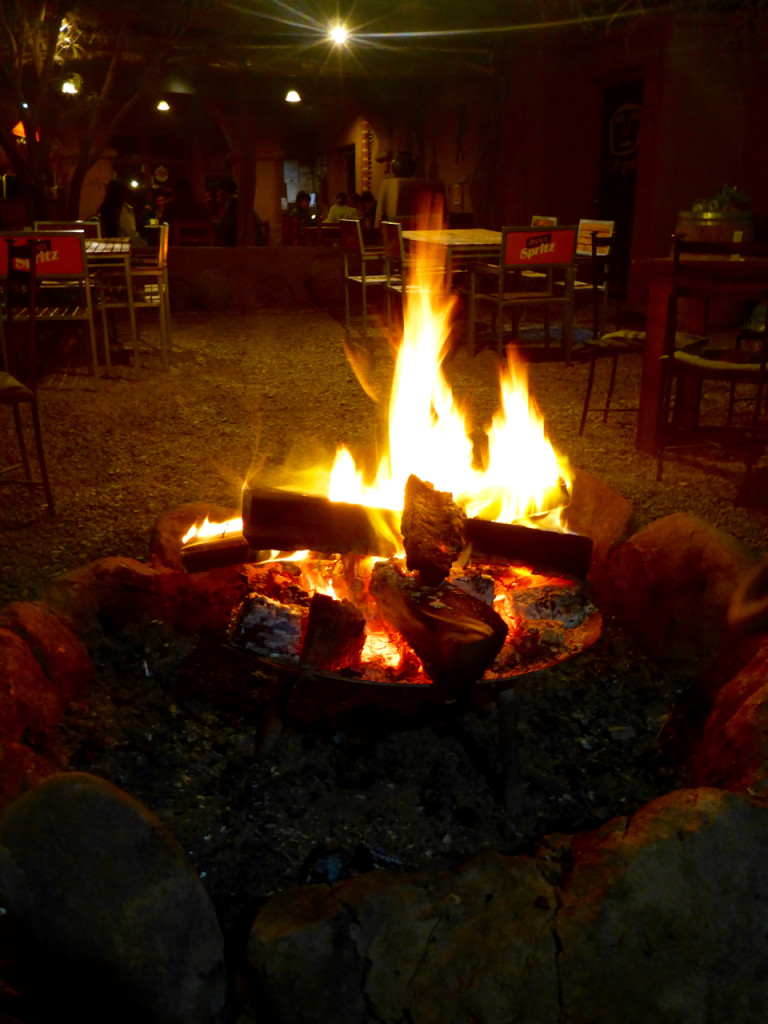
The next day we made our plans for our Salt Flats trip, I was extremely excited to see them so we didn’t plan to spend much time in San Pedro. We took an afternoon tour out to the Moon Valley and the Valley of Death/Mars.
It was a pretty cool to see all the crazy landscapes out here, with crazy rock and salt formations that look the surface of the moon or Mars, which lend their names of the valleys.
Salt just leaches out of the ground here and looks like snow at a distance. We got to go into a cave made almost exclusively of slat. Yes. I licked the wall to check.
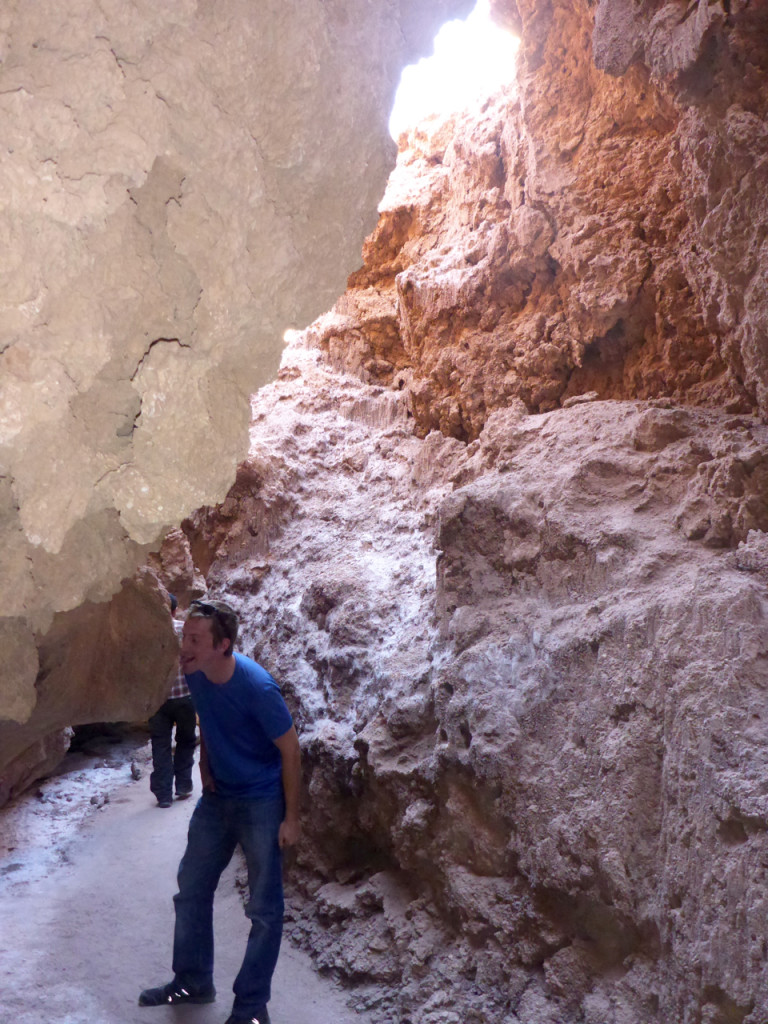
We got to see the Salvador Dali mountains, named after the way the looked like, well, a Salvador Dali painting.
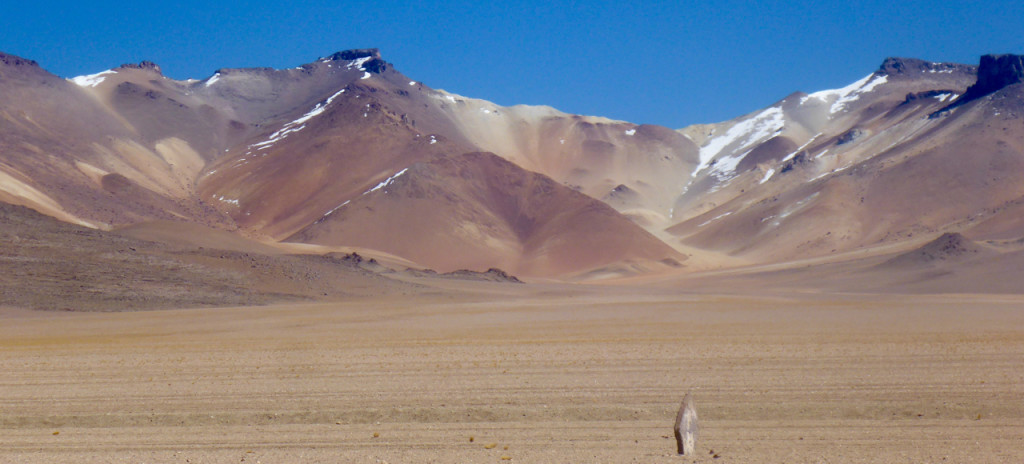
And finished the evening with a private photo shoot on Coyote Rock… ok maybe not so private.
The next morning we packed everything up and meet our mini bus at dawn for a 3 day trip to Uyuni via the altoplano and salt flats. The altoplano is kinda like the high plains in the states… but a lot higher… and there are volcano’s… and geysers… and flamingos… so maybe not so much like the states.
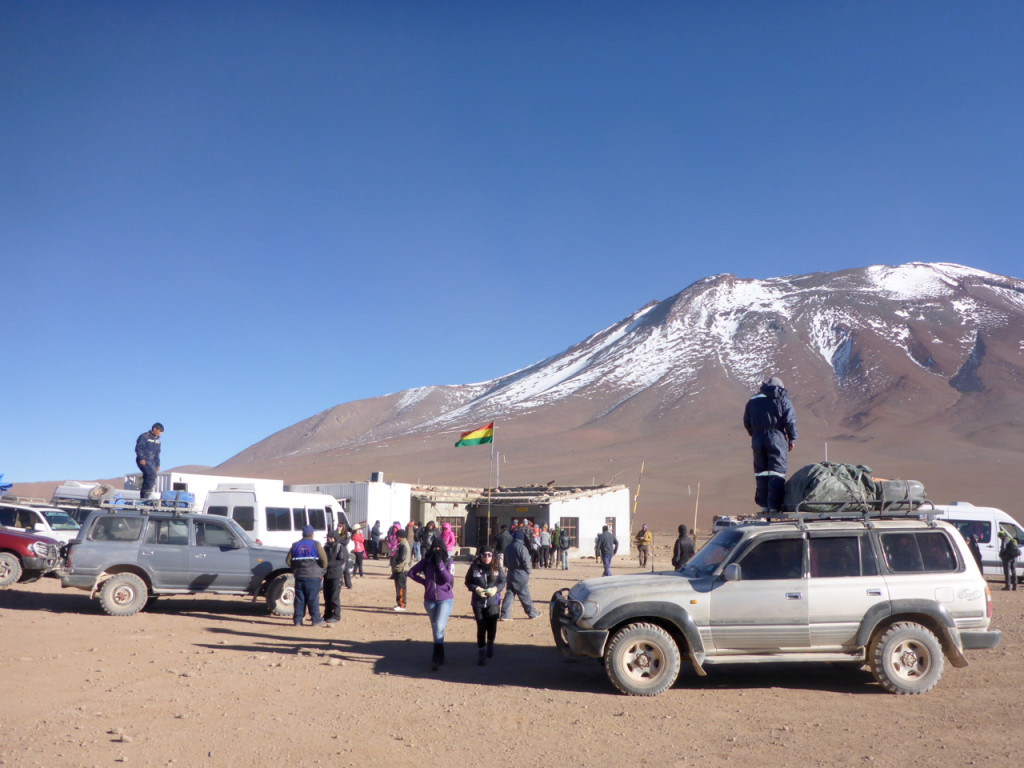
Our first stop was at the Chile-Bolivia border where we leave our mini-bus, go through “immigration” and meet our 4×4 driver/guide for the rest of our trip. The border crossing is on a pass about 14,000 feet up. It’s super windy and freezing cold. Never have I seen so many Land Cruisers in one spot. All loaded up with 100 extra gallons of gasoline and a couple of spare tires, not the kind of place to want to get stuck.
At the border we needed to pay $USD 60 a person for 30 day visas to Bolivia and due to a slight banking error on my part (it takes a few days to move money from account to account as a safe guard against being robbed) we were down to our last few bucks, but we had just enough with a few Chilean Pesos to spare. We filled out our paper work and handed it to the Border Patrol with our money. He hold the 100 up to the light, verify it’s legitimacy then does the same to the 20, stops puts it in my face and flicks the edge where a tiny nick was and says “No.”
I say “what?”
He flicks it again, closer to my face and says “NO!”
I try to explain in broken Spanish that I don’t have any other bills that’s all I’ve got to which he replies “Then you no enter Bolivia” and takes our papers and throws them behind a desk.
I. Freak. Out. And kinda storm out of the little building not sure what to do, but sure we be stuck freezing to death outside with no where to go.
After Liz calms me down a little, a nice Chilean lady who is in our group understands what’s going on and starts trying to find me a good bill; she’s asking everyone. Eventually she finds a little old lady that I’m sure here only reason being there was to give horrible exchange rates to desperate gringos like me on the last pesos I had which was just enough. After some apologies and pleading and digging papers out of the trash, we paid our way into Bolivia in Dollars and Boliviano (no change of course) and were probably the lasts ones to leave the border.
From there it was all uphill… literally. Our little Land Cruiser climbed and climbed until we reached so of the most remote, desolate and beautiful landscapes on the planet.
We were pleasantly surprised to find hot springs at about 15,500 feet and enjoyed a steamy dip before going up another 1000 feet to the geysers. Steamy, bubbly mud holes with a broken English warner from our driver, “No fall in!”
With the smell of sulfur firmly attached to our clothing we made our way to Laguna Colorada, a brilliant red lagoon with flamingos just waiting to pose. I always thought of Flamingos as tropical birds, but here they are wadding through the water at 14,000 feet while we freeze to death.
It was gorgeous and unreal then it was on to another lagoon and to our camp for the evening and some hot cups of coca tea.
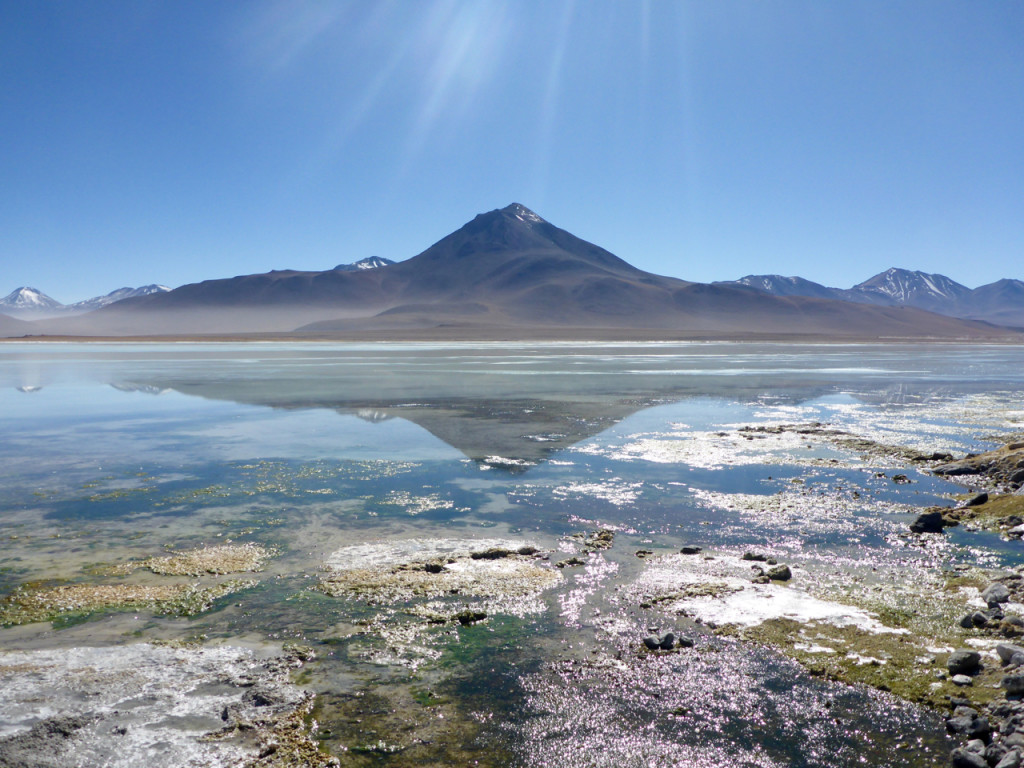
The next day was just as unreal, full climbing all over unbelievable rock formations and the discover of a new to us plant called, loosely, green rock. A crazy plant that looks like moss, is hard as a rock, and has a slight sap that make your hands sticky if you touch it.
Our accommodations for the evening were on the edge of the Uyuni Salt Flats at the Salt Hotel… literally the whole thing is made of salt. Even the chandeliers.
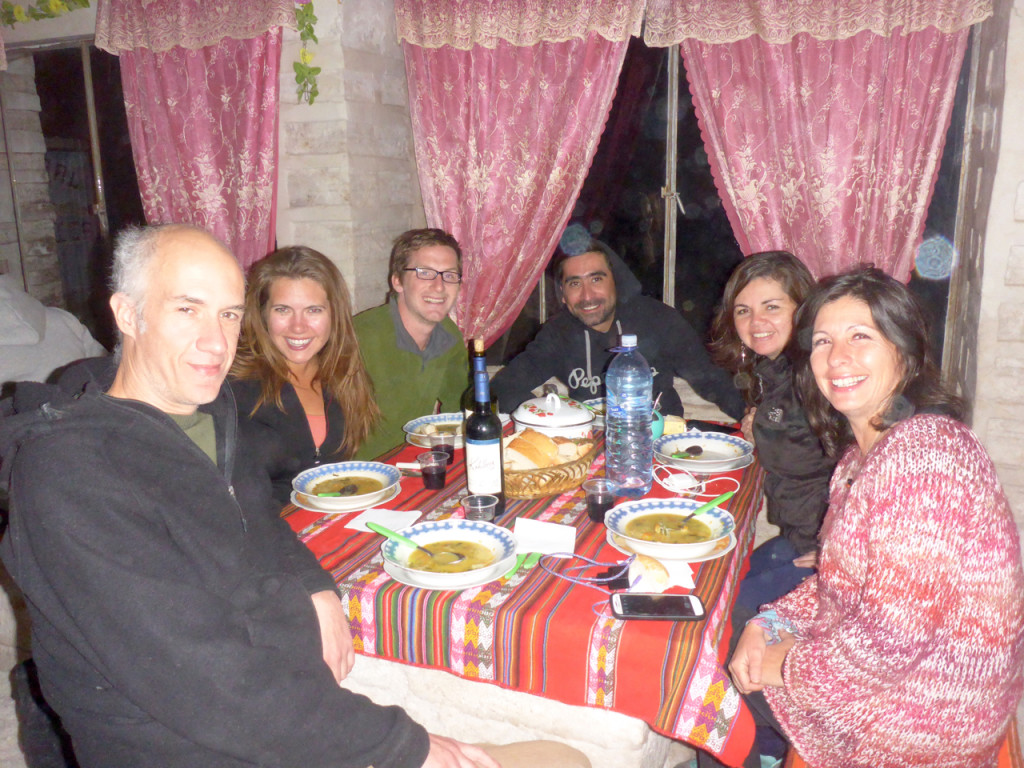
We awoke EARLY to drive out to the saguaro cactus island in the middle of the salt flats to catch sunrise.
The rest of the day was basically a never end forced perspective photo shoot on a never-ending backdrop.
And then Liz taught me how to levitate.
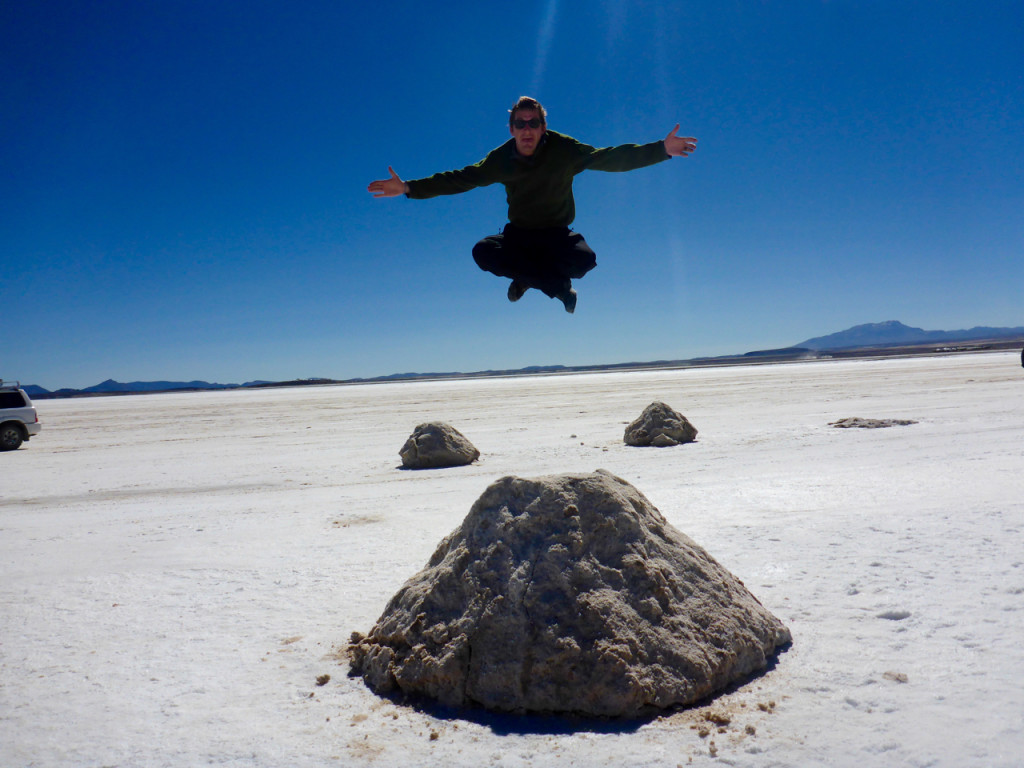
We concluded our tour with a trip to the Train Graveyard on the edge of Uyuni, Bolivia where all good Bolivian trains go to die… and then be cut up for scrape metal.
